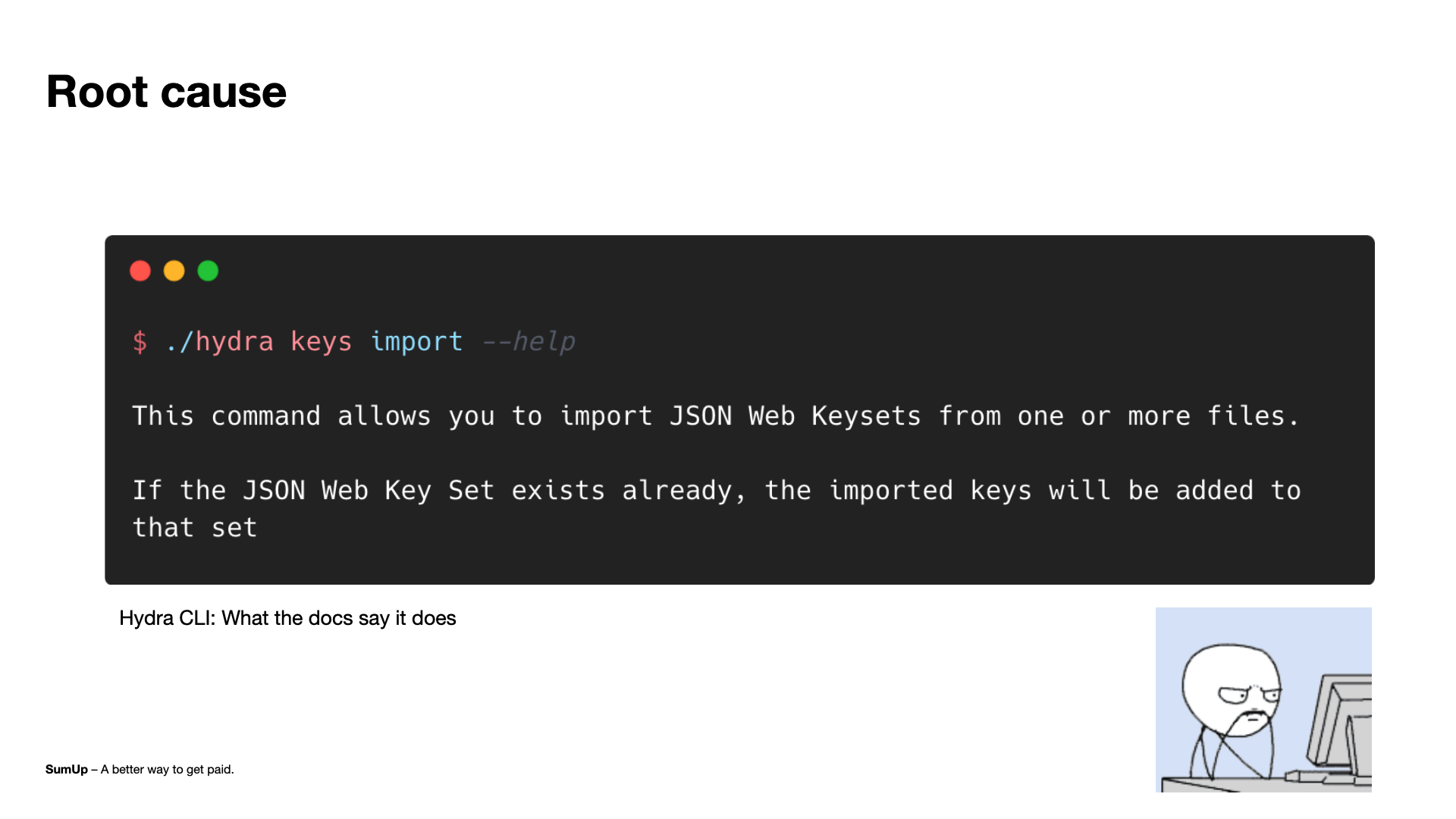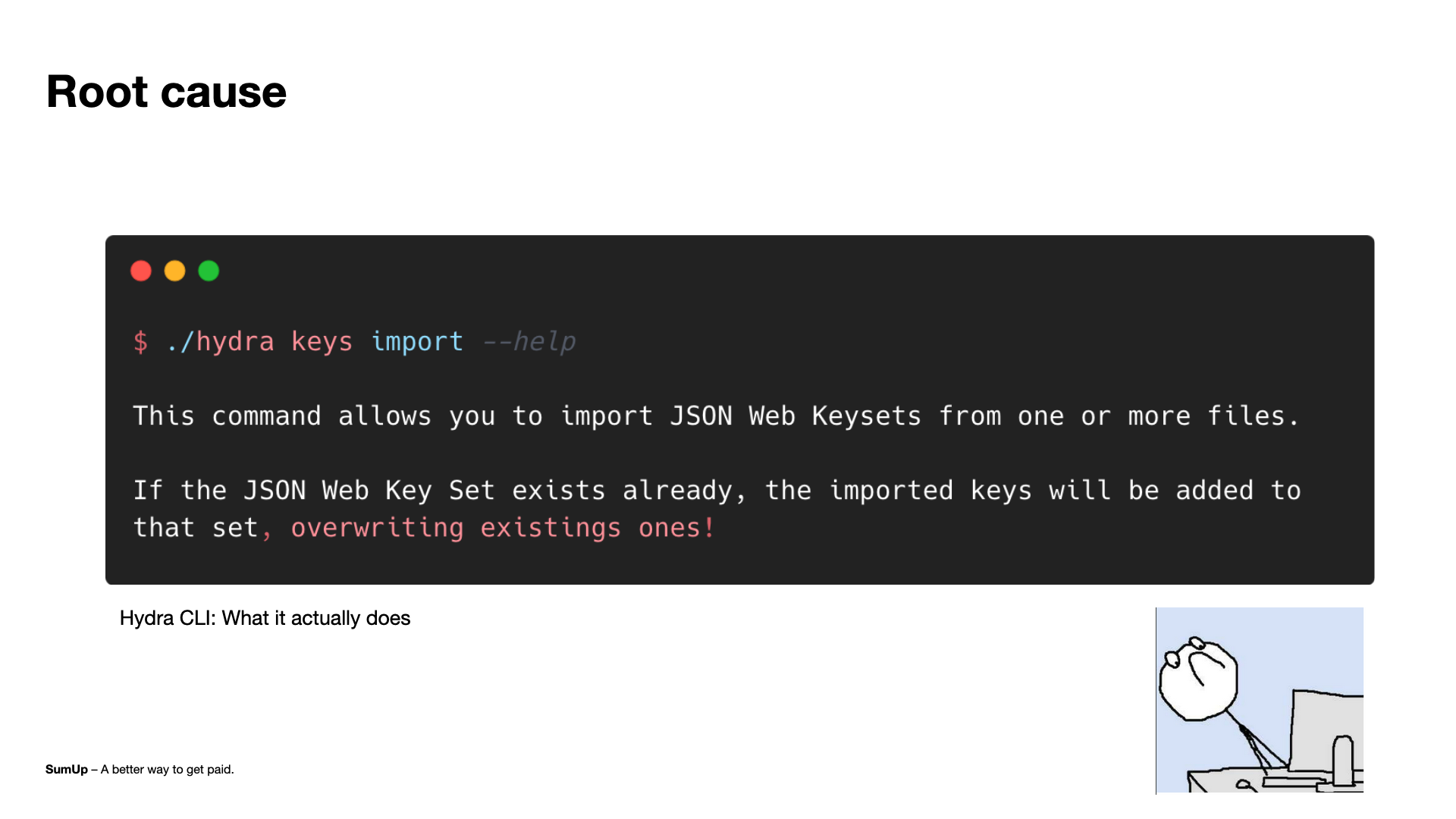Show, don't tell
Show, don’t tell is a writting technique that allows the reader to experience and relate to the story through actions and feelings rather than exposition. The show, don’t tell rule applies to all kinds of written text from poetry to screenwriting. Can the rule be extended to engineering documents as well?
Presentations are the first place where the Show, don’t tell rule works well. Nothing gets the audience bored more than a wall of text on every slide. In the case of presentations show, don’t tell applies to both the content of slides and the presenters speach. Tell or show the listeners the story (e.g. “Our users are having issues using our product in such and such way”) and let them figure out the rest. Here’s a wonderful example from my colleague Johanneses recent presentation for the Incident of the month.


Another place where the Show, don’t tell rule can help you is in RFCs and architecture documents. Explaining relationships, models, flows, or service dependencies is hard and often neglected by the person writing the document because they might already have the necessary context to build the mental model. The easier way to get everyone on the same page is to provide visual guidence. Here’s an example from our RFC on the introduction of External Authorization API showing the flow between an user and our services.

Following the Show, don’t tell rule requires more effort but there are several benefits to it:
- Most people are visual learners and can extract information better from images than walls of text.1
- Drawing or mapping down problems and solutions helps also you - the author - align your thoughts.
- Visual explanation often reduces the ambiguity of written text.
In short, tell the audience the story or issue and let them draw conclusions from there without forcing your narrative. This brings wider range of opinions into discussion and makes the others more interested. And when applicable, provide visual material alongside the text to help the readers understand the models or flows so that you can focus on the important things instead of explaining ambiguities in your writing.